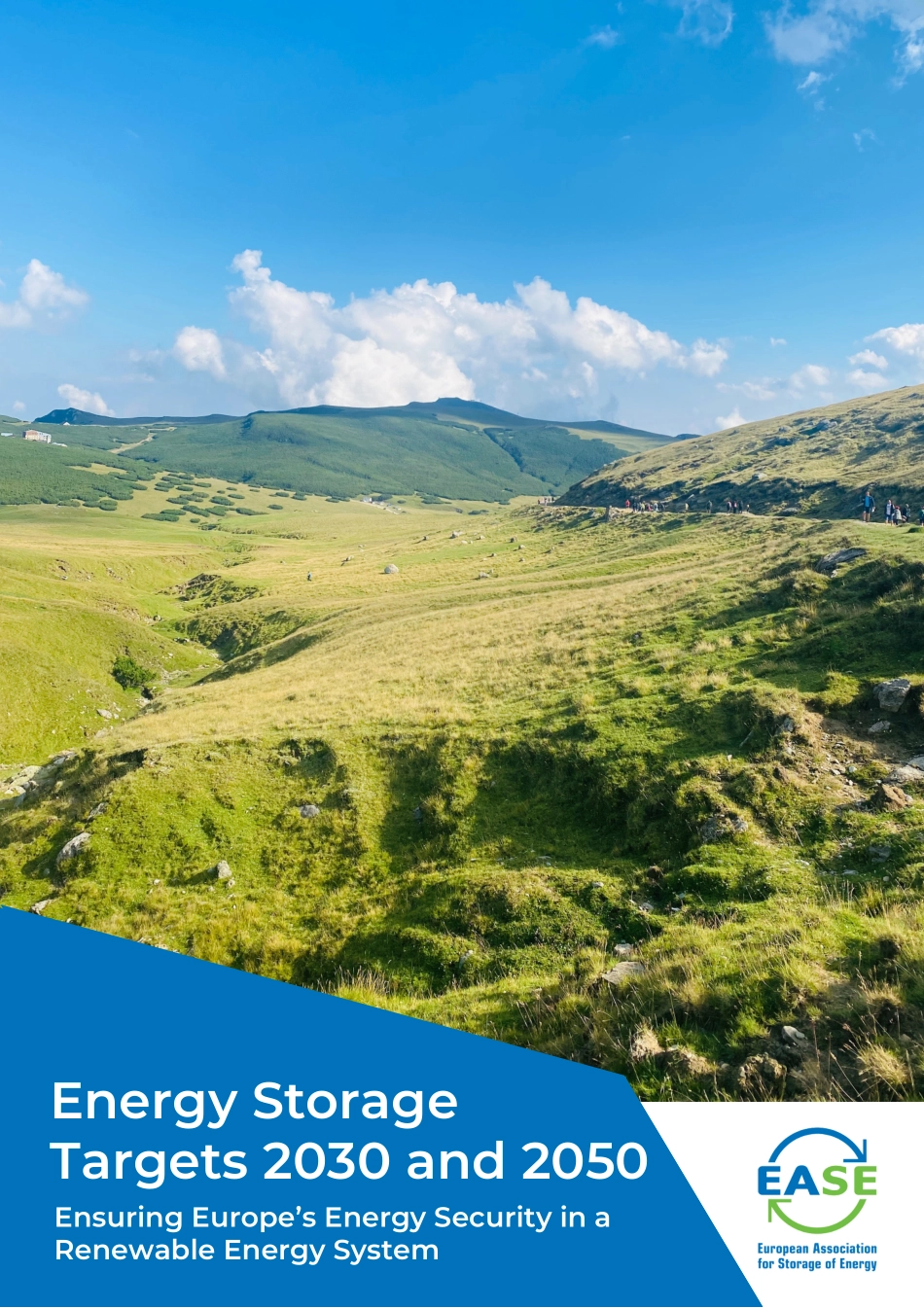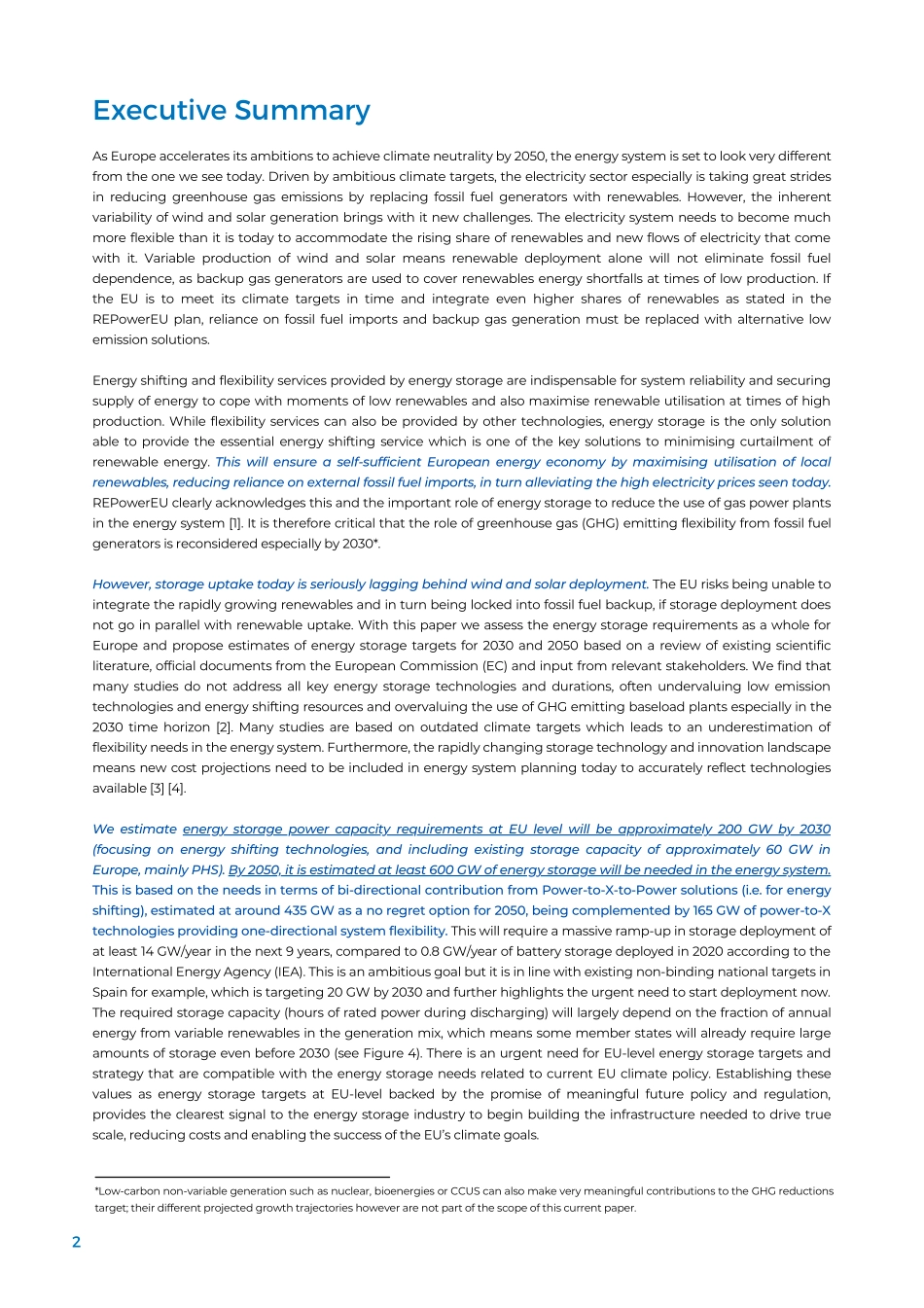Energy Storage Targets 2030 and 2050Ensuring Europe’s Energy Security in a Renewable Energy SystemAs Europe accelerates its ambitions to achieve climate neutrality by 2050, the energy system is set to look very differentfrom the one we see today. Driven by ambitious climate targets, the electricity sector especially is taking great stridesin reducing greenhouse gas emissions by replacing fossil fuel generators with renewables. However, the inherentvariability of wind and solar generation brings with it new challenges. The electricity system needs to become muchmore flexible than it is today to accommodate the rising share of renewables and new flows of electricity that comewith it. Variable production of wind and solar means renewable deployment alone will not eliminate fossil fueldependence, as backup gas generators are used to cover renewables energy shortfalls at times of low production. Ifthe EU is to meet its climate targets in time and integrate even higher shares of renewables as stated in theREPowerEU plan, reliance on fossil fuel imports and backup gas generation must be replaced with alternative lowemission solutions. Energy shifting and flexibility services provided by energy storage are indispensable for system reliability and securingsupply of energy to cope with moments of low renewables and also maximise renewable utilisation at times of highproduction. While flexibility services can also be provided by other technologies, energy storage is the only solutionable to provide the essential energy shifting service which is one of the key solutions to minimising curtailment ofrenewable energy. This will ensure a self-sufficient European energy economy by maximising utilisation of localrenewables, reducing reliance on external fossil fuel imports, in turn alleviating the high electricity prices seen today.REPowerEU clearly acknowledges this and the important role of energy storage to reduce the use of gas power plantsin the energy system [1]. It is therefore critical that the role of greenhouse gas (GHG) emitting flexibility from fossil fuelgenerators is reconsidered especially by 2030*.However, storage uptake today is seriously lagging behind wind and solar deployment. The EU risks being unable tointegrate the rapidly growing renewables and in turn being locked into fossil fuel backup, if storage deployment doesnot go in parallel with renewable uptake. With this paper we assess the energy storage requirements as a whole forEurope and propose estimates of energy storage targets for 2030 and 2050 based on a review of existing scientificliterature, official documents from the European Commission (EC) and input from relevant stakeholders. We find thatmany studies do not address all key energy storage technologies and durations, often undervaluing low emissiontechnologies and energy shifting resources and overvaluing the use of GHG emitting baseloa...


